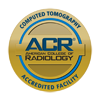Open MRI in Hackensack New Jersey
A closed cylindrical MRI scanner can provide nice MRI images in right patient or right clinical situation. Here at Affinity Imaging in Hackensack NJ we have a great 3.0T Machines. However there are many situations where Open MRI scanners can provide great images and help people who have a fear of confined spaces. In some cases an open MRI examination can even provide greater patient safety because of access and speed of the scan.
At Affinity Radiology in Hackensack, NJ we have an Open MRI that is able to provide imaging evaluation of patients who are physically too large to be comfortably placed within a conventional cylindrical MRI scanner.
The Open sides of an open MRI allow patients to see the room surrounding the scanner to minimize claustrophobia. There is also easy access to a friend or family member to comfort the patient or to provide necessary physical or medical support during an MRI examination.

The wide open design of an Open MRI allows the critical body parts of a patient to be positioned near the center of the magnet where the best images of the body part are obtained. A closed cylindrical shaped MRI does not allow all body parts to have the best position in the magnet and larger patients may have an even greater problem with optimal positioning of critical body parts within the MRI scanner.
Open MRI scanners produce less noise than closed MRI scanners. Loud noises of closed MRI examinations can be uncomfortable and in some cases can damage hearing, so closed MRI scanners may require ear plugs to protect hearing and minimize discomfort. An open MRI examination may not require ear plugs.
Many patients have metallic objects within their bodies from previous surgery. Artifacts from metal implants can greatly reduce the quality of MRI images. However the lower magnetic field strength open MRI scanners produce less artifact from metallic implants than higher magnetic field closed MRI scanners, so patients with metallic implants may obtain greater benefit from an open MRI examination.
The rapidly changing magnetic fields and radio waves used by MRI generate heat within metallic implants within the body or metal attached to the body, including some dyes within tattoos or mascara. This heating effect is decreased and sometimes eliminated by the lower magnetic field strength open MRI scanners.
Lower field strength open MRI scanners have greater contrast between different types of body tissues, so it may be easier to find abnormal body tissues with an open MRI even if there is less spacial detail within the body tissues. This greater natural tissue contrast provided by an open MRI decreases the need for the injection of chemical contrast agents into the veins of the patient.
If you or a loved one has any questions about our MRI either Open or Closed call us at 201-968-5544 and a friendly staff member can help you with your questions. We participate with all major medical insurance companies and Medicare and can schedule you for a same-day appointment if needed.




